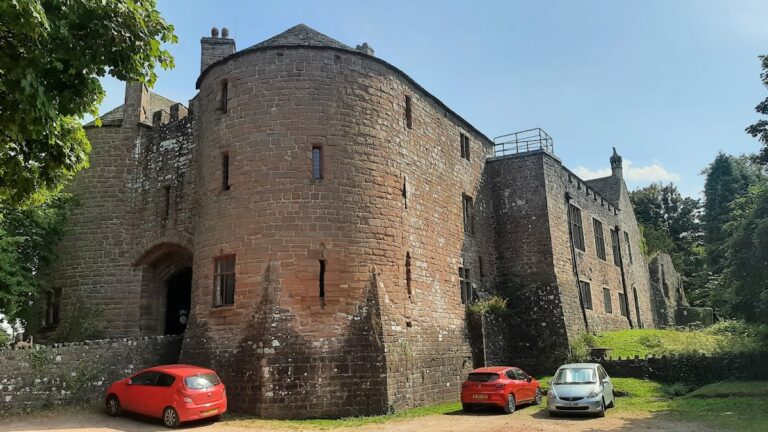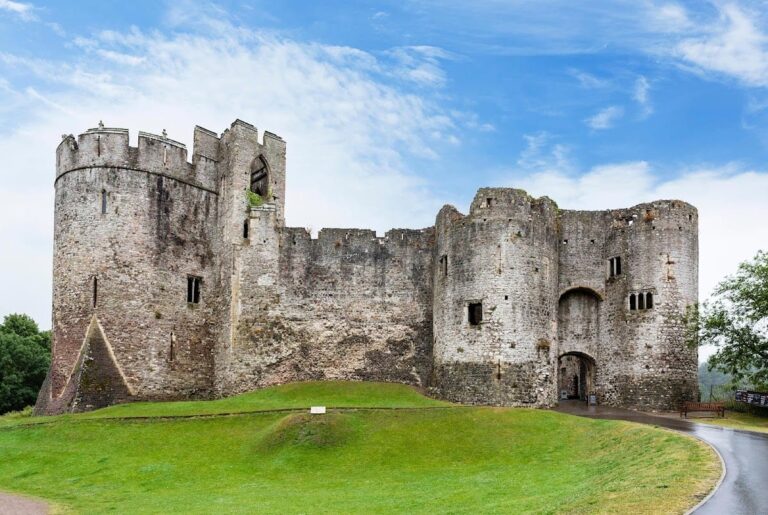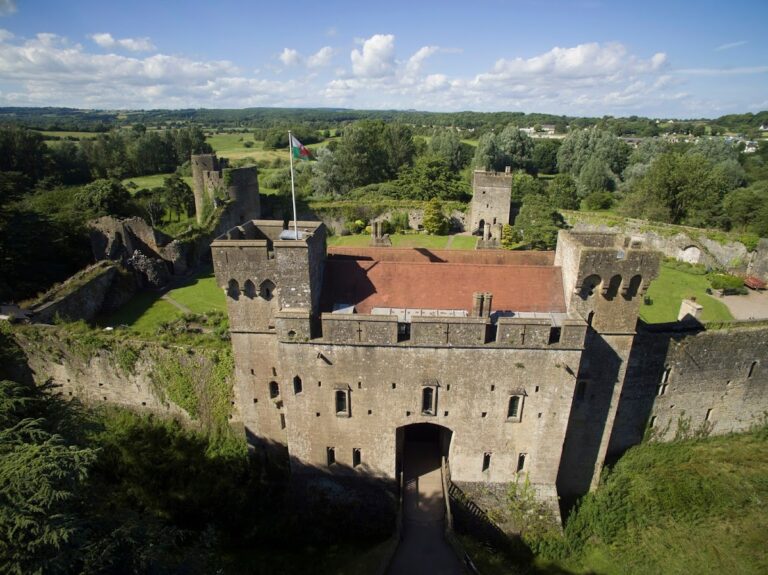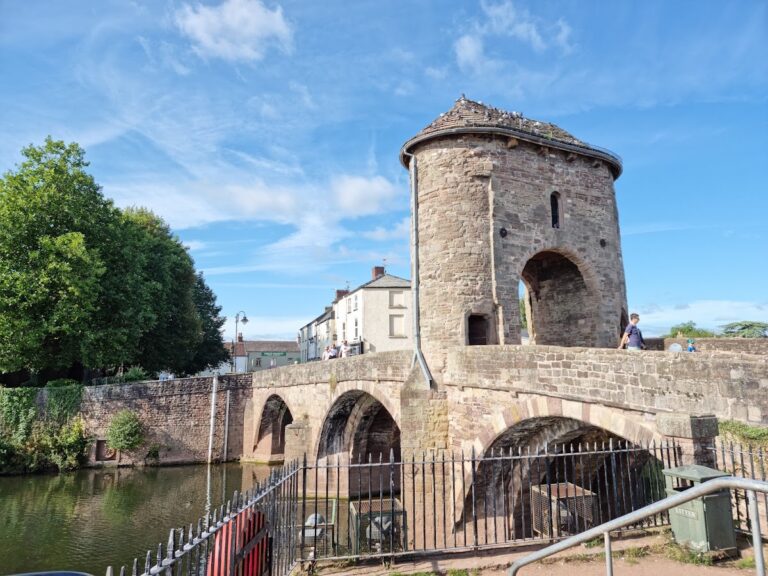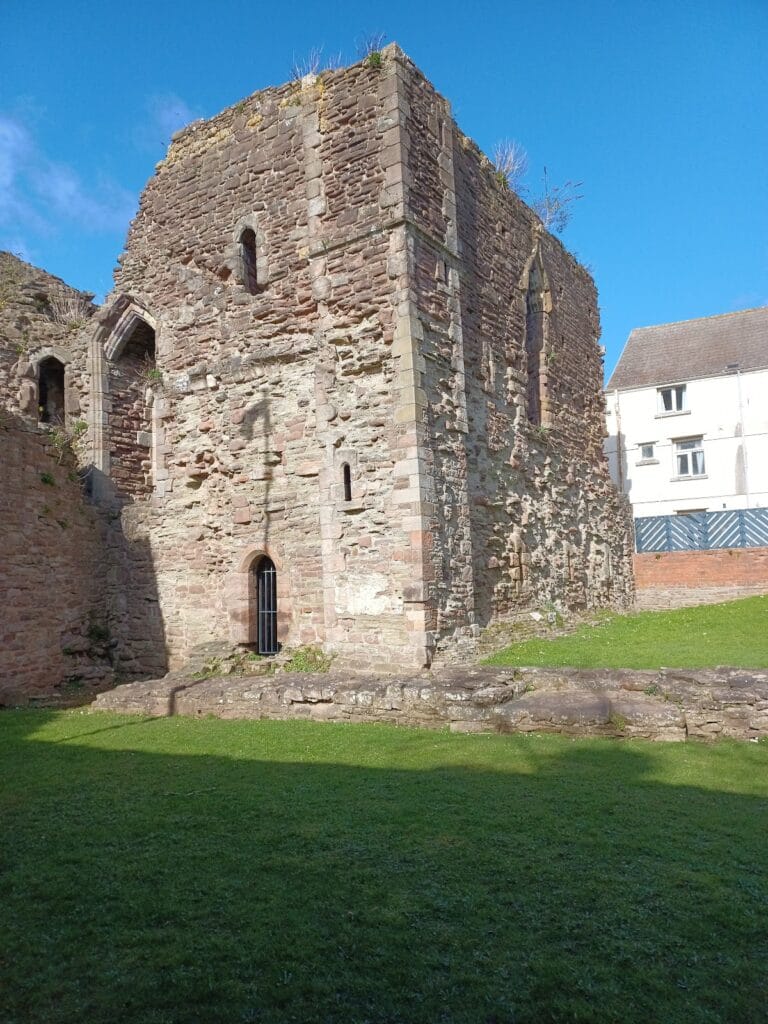Berkeley Castle: A Historic Norman Fortress in Gloucestershire, England
Visitor Information
Google Rating: 4.7
Popularity: Medium
Google Maps: View on Google Maps
Official Website: www.berkeley-castle.com
Country: United Kingdom
Civilization: Medieval European
Remains: Military
History
Berkeley Castle stands in Berkeley, Gloucestershire, England, and was originally built shortly after the Norman Conquest. Around 1067, William FitzOsbern, a close ally of William the Conqueror, established a motte-and-bailey castle on the site. This early fortification featured a wooden keep atop an earth mound, known as a motte, surrounded by a protective bailey or courtyard.
The castle remained under the control of three successive generations of the first Berkeley family, all named Roger de Berkeley, until 1152. The last Roger lost the castle after refusing to pledge allegiance during the civil war known as the Anarchy. Following this, the feudal barony was granted to Robert Fitzharding, a wealthy Bristol merchant and supporter of the Plantagenet kings. Between 1153 and 1156, Fitzharding rebuilt the castle in stone, replacing the wooden structures with a circular stone shell keep.
From the 12th century onward, the castle stayed in the Berkeley family’s hands, except for a period of royal possession under the Tudor monarchs between 1492 and 1553. This long tenure makes Berkeley Castle the oldest castle in England continuously owned and inhabited by one family. The castle’s history is closely linked to the imprisonment and death of King Edward II in 1327. Edward was held captive there from April to September under the watch of Thomas de Berkeley and John Maltravers. Historical accounts describe a secretive murder involving a red-hot iron instrument, a grim event that has become part of the castle’s legacy.
Berkeley Castle also played a role in regional conflicts. It was involved in the Battle of Nibley Green, a dispute over ownership, and later faced a siege during the English Civil War in 1645. Parliamentarian forces captured the castle, but the Berkeley family retained ownership afterward. However, they were legally required to leave the damaged keep and outer bailey unrepaired, a condition that remains in effect today.
The castle’s history includes notable visits by monarchs such as Henry VIII and Elizabeth I. It also has connections to education through the founding of Katharine Lady Berkeley’s School in 1384. The Great Hall witnessed the death of England’s last court jester, Dickie Pearce, adding to the castle’s rich historical tapestry.
Remains
Berkeley Castle’s layout centers on a circular stone shell keep built in the mid-12th century, likely on the original motte site. This stone keep replaced the earlier wooden structure and is surrounded by curtain walls constructed between about 1160 and 1190. These walls enclose the inner bailey, forming a defensive courtyard. The walls and keep are primarily built from stone, reflecting medieval construction techniques.
Several 14th-century additions remain, including Thorpe’s Tower located north of the keep and the inner gatehouse to the southwest. These structures, commissioned by Thomas de Berkeley, 3rd Baron Berkeley, also include various buildings within the inner bailey. The castle chapel, originally dedicated to St Mary and now known as the Morning Room, features painted wooden vaulted ceilings and a biblical inscription written in Norman French.
The Great Hall, adjoining the chapel, was re-roofed in the 14th century and remains a significant interior space. Within the castle is the cell where King Edward II was imprisoned and allegedly murdered. This cell is visible today and lies next to a deep dungeon approximately 11 meters (36 feet) in depth. Local tradition holds that sounds echo from this dungeon annually on the anniversary of Edward’s death.
The castle grounds include terraced gardens and a bowling green once used by Elizabeth I. A notable pine tree, planted in the early 18th century, is said to have grown from a cutting connected to the Battle of Culloden. After the 1645 siege during the English Civil War, the keep and outer bailey walls were left breached. The breach was partially filled with a low modern garden wall to prevent falls from the original motte’s 28-foot height, but the damage remains largely unrestored due to legal restrictions.
Inside the castle is an antique four-poster bed, recognized as the longest continuously used piece of furniture by one family in Great Britain. Early 20th-century restoration work included Gothic-style remodeling and the addition of a porch by the 8th Earl of Berkeley. The castle is currently managed by the Berkeley Castle Charitable Trust, which has undertaken recent renovations, including work on the Education Room.






